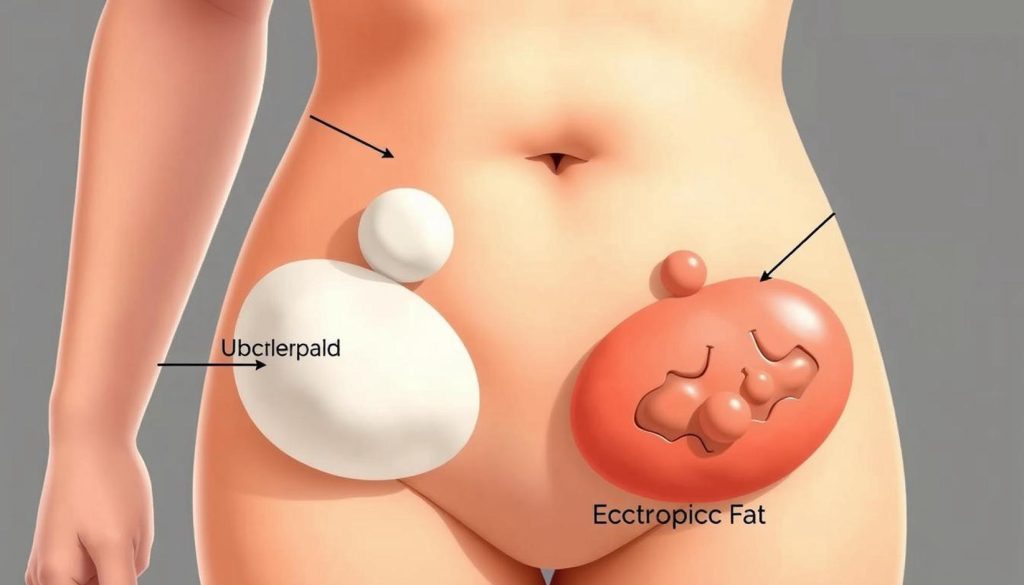Best Way To Lose Belly Fat Too much belly fat can result in severe health issues such as diabetes and heart disease. However, with the proper strategy, you are able to lose belly fat and improve your health.
Best Way To Lose Belly Fat
Proven Steps to Lose Belly Fat Fast
Tired of battling with stubborn belly fat? Do you question whether it’s possible to achieve a flatter stomach fast and effectively? Losing belly fat is not merely about appearance. It’s also about the health aspect.
Too much belly fat can result in severe health issues such as diabetes and heart disease. However, with the proper strategy, you are able to lose belly fat and improve your health. Here we will present actionable advice on how to lose belly fat quickly. We will discuss diet, exercise, and lifestyle modifications.
We want to take you through a step-by-step plan with belly fat loss tips and how-to’s for sustainable weight loss. At the conclusion of this article, you will have everything you need to begin your journey toward a healthier, thinner you.
Read More: What Foods Speed Up Female Metabolism

Key Takeaways
Learn why losing belly fat is vital to overall health.
Learn how to effectively reduce belly fat.
Find practical diet and exercise advice for a flat stomach.
Discover lifestyle modifications that favor belly fat reduction.
Obtain a complete plan to reach your weight reduction goals.
Understanding Belly Fat: Types and Health Risks
Knowledge of the various types of belly fat and their health risks is important for a healthier life. Belly fat is not just a physical beauty issue. It is a severe health risk that we need to address.
Visceral vs. Subcutaneous Fat
Belly fat is primarily divided into visceral and subcutaneous fat. Visceral fat encircles our organs, and subcutaneous fat is just under the skin. Visceral fat is particularly dangerous because it can lead to numerous health issues.
While Belly Fat Is Dangerous for Your Health
Excessive belly fat, particularly visceral fat, increases the risk of severe diseases. These are heart disease, type 2 diabetes, and certain cancers. Visceral fat may lead to inflammation and insulin resistance, which worsens health issues.
Causes of Excess Abdominal Fat
There are various reasons why one may have too much belly fat. They are:
Dietary factors
Lifestyle contributors
Genetic considerations
Dietary Factors
Eating too much sugar, refined carbs, and saturated fats can increase belly fat. A diet missing key nutrients and fiber also helps fat build up.
Lifestyle Contributors
Sitting too much and constant stress add to belly fat. Not moving enough and bad sleep quality also play a part.
Genetic Considerations
Genetics can affect where our body stores fat. Some people naturally tend to store fat around their belly due to their genes.
By understanding these factors, we can begin reducing belly fat and improving our health.
The Best Method to Lose Belly Fat: A Holistic Approach
Belly fat reduction must be done with a holistic approach. It requires modifying your diet, exercising, and altering your lifestyle. This approach addresses all the sides to ensure that you lose weight successfully.
Why Spot Reduction Won’t Work
Spot reduction does not exist. Fat loss is systemic, meaning that it occurs everywhere on the body and not one particular spot. So, performing a lot of crunches will not necessarily result in belly fat reduction.
The Science Behind Effective Fat Loss
Successful fat loss is the result of building a calorie deficit. That is, you burn more calories than you consume. You can achieve this by reducing your intake and exercising more. Strength training and HIIT (high-intensity interval training) are excellent fat-burning exercises.
Read More: How To Increase Metabolism
Setting Realistic Expectations and Goals
It’s important to set realistic expectations when trying to lose belly fat. Aim to lose 1-2 pounds a week. This is a healthy and achievable goal. Setting unrealistic goals can make you feel frustrated and discouraged.
Creating a Sustainable Action Plan
A sustainable action plan requires making lasting changes to your lifestyle. This involves eating healthily, exercising daily, and stress management. By prioritizing your overall health and wellness, you can shed belly fat and maintain it.
Nutrition Strategies for Targeting Belly Fat
To target belly fat successfully, concentrate on your diet. A balanced diet helps one lose weight and enhance overall health. By eating the correct foods and staying away from bad foods, one can lose inches around the waist.
Foods That Combat Belly Fat
Some foods fight belly fat. These are:
Fiber-Rich Foods
Fiber-rich foods such as legumes, oats, and fruits make you feel full. This lowers the risk of overeating. Eat a combination of fiber-rich foods.
Healthy Fats
Avocados, nuts, and olive oil burn belly fat. These foods are high in healthy fats that promote metabolic health.
Lean Protein Sources
Consuming lean proteins such as chicken, fish, and tofu accelerates your metabolism. Protein requires more energy to digest, which boosts your metabolic rate.
Foods to Avoid for a Flatter Stomach
Knowing what to avoid is as important as knowing what to eat. Foods and beverages that contribute to belly fat include:
Sugary drinks
Refined carbohydrates
Processed snacks
Meal Timing and Portion Control
Eating at the right times and controlling portion sizes impacts belly fat. Skipping meals can lead to overeating later. Opt for regular, balanced meals to keep your metabolism steady.
Meal Timing
Benefits
Eating breakfast
Kicks off metabolism
Having regular meals
Prevents overeating
Avoiding midnight snacking
Decreases calorie consumption at night
Protein’s Role in Belly Fat Loss
Protein plays a significant role in losing belly fat. It repairs and grows muscles and leaves you feeling full. Increasing protein food in your diet aids in your weight loss.
To burn stomach fat, combine various exercises that accelerate your metabolism and engage your abs. A well-designed fitness regimen aids you in shedding pounds and becoming healthier.
High-Intensity Interval Training (HIIT)
HIIT is an excellent way to burn fat, including stomach fat. HIIT includes brief, intense workouts with periods of rest in between. It not only burns the calories during the exercise but also raises your resting metabolic rate.
Sample HIIT Workouts for Beginners
Newcomers can begin with simple HIIT exercises. Perform 30 seconds of burpees and 30 seconds of rest, repeated for 15-20 minutes. Jumping jacks, mountain climbers, and sprints are also suitable.
Advanced HIIT Protocols
As you become advanced, attempt more difficult exercises. You can perform longer intervals, more difficult exercises, or shorter rest periods. For instance, Tabata exercises consist of 20 seconds of work and 10 seconds of rest, repeated 4-6 times.
Strength Training for Fat Loss
Strength training is essential when losing fat. It works to create muscle, which raises your resting metabolic rate. Use squats, deadlifts, and bench press to develop muscle and shed fat.
Read More: Fat Burning Foods For Belly Fat
Core-Strengthening Exercises
Making your core stronger enhances muscle tone and stability. Perform planks, Russian twists, and leg raises to engage your abs. A strong core also assists with other workouts and daily tasks.
Abdominal Fat Burning Cardio Workouts
Cardio is necessary in burning calories and losing belly fat. Running, cycling, and swimming are good cardio exercises. Try to do at least 150 minutes of moderate-intensity cardio per week, or 75 minutes of vigorous-intensity cardio.
As “Exercise is a celebration of what your body can do, not a punishment for what you ate.” – Unknown. Incorporating these exercises in your daily routine can assist you in attaining your fitness level and maintaining good health.
Lifestyle Changes to Reduce Waistline Naturally
Healthy lifestyle changes are required to reduce waistline naturally. A few simple habits can lead us to a waist that is slimmer without any extreme practice.
Daily Habits That Promote Fat Loss
Establishing fat-loss daily routines is important. Attempt to use the stairs or take a walking break. “Small things make a large impact.” Savoring our food and eating slowly will also avoid overeating.
Creating a Calorie Deficit Without Extreme Dieting
We don’t require drastic diets to achieve a calorie deficit. Eat more fruits, vegetables, and whole grains. Reduce processed food and drinks.
The Role of Consistency and Patience
Consistency and patience are essential for natural waistline loss. “It’s a journey, not a destination.” Be consistent and patient, as weight loss is a slow process.
Creating Sustainable Changes for Long-Term Results
For long-term results, adopt long-lasting lifestyle changes. Create realistic expectations, monitor your progress, and make necessary adjustments. In this manner, you can maintain your weight reduction and have a healthier waistline.
Remember,
“It’s not about being the best, it’s about being better than you were yesterday.”
By gradually enhancing and embracing a health-centered lifestyle, we can slim down naturally and enhance our wellness.
The Power of Proper Hydration for Weight Loss
Water is essential to burn fat and stay healthy. It’s crucial for our metabolism and digestion. They are essential to lose weight.
How Water Supports Burning Fat
Adequate water consumption increases our metabolism. This encourages us to burn more calories. A small amount of dehydration is enough to decrease our metabolism and make losing weight more difficult. Water digests fat cells, allowing our body to utilize them as energy.
Ideal Daily Intake of Water
The volume of water we require differs. It is determined by how old we are, our sex, our weight, and how active we are. One general guideline is to drink a minimum of eight 8-ounce glasses daily, which is the 8×8 rule.
Hydration Tips During the Day
To become hydrated, follow these suggestions:
Take a glass of water when we wake up.
Have a glass of water before we eat any meal.
Keep a water bottle with us all day.
Alternatives to Plain Water
If plain water isn’t your thing, try these:
Infused water with fruits or herbs.
Herbal teas.
Low-sugar sports drinks for intense workouts.
Staying hydrated is a simple yet effective way to support our weight loss journey.
Sleep Quality and Its Impact on Belly Fat
Many things affect belly fat, and sleep quality is key. Studies show that bad sleep can make it hard to lose weight and keep it off.
Read More: High-protein weight loss
The Connection Between Sleep Deprivation and Weight Gain
Not getting enough sleep can raise cortisol levels. This stress hormone helps fat build up around the belly. Also, bad sleep messes with hunger hormones, making us want to eat more.
Optimal Sleep Duration for Fat Loss
Adults require 7-9 hours of sleep per night to be healthy. Within that range is optimal for metabolism and losing body fat. Uniformity is essential; a steady sleep schedule is best.
Improving Sleep Quality
To improve sleep, consider the following:
Create a bedtime routine that is relaxing
Do not use screens before bed
Make a comfortable sleeping space
Creating an Ideal Sleep Environment
Sleep best in a dark, silent room. Use blackout curtains and earplugs if necessary. Spending money on a good mattress helps a great deal as well.
Bedtime Routine for Improved Sleep
Read or meditate before going to bed, something relaxing. This signals your body that it is time to sleep. Avoid screens and stimulating things an hour before bedtime.
Stress Management Techniques for Belly Fat Loss
Stress has to be managed in order to lose belly fat. When stressed, our body releases cortisol. This hormone causes us to store fat in our belly.
How Stress Leads to Abdominal Fat
Stress maintains high levels of cortisol, and as a result, more fat is stored, particularly around the belly. Not only is this fat ugly, but it also is unhealthy for us.
Effective Stress-Reduction Techniques
To manage stress, we can attempt various activities. Yoga and deep breathing are excellent ways to reduce stress. Also, one can reduce stress through regular exercise such as walking or jogging.
Mindfulness and Meditation for Weight Management
Mindfulness and meditation are excellent ways to control weight. These activities decrease stress and enhance our perception of food, resulting in good eating habits.
Finding Balance in Your Fat Loss Journey
One has to maintain an optimal balance of diet, exercise, and stress management to achieve weight loss. Incorporating stress-reducing habits into everyday life helps in losing stomach fat in a healthy manner.
Monitoring Progress: Beyond the Scale
When you’re on a weight loss path, monitoring your progress is critical. Glancing at the scale isn’t sufficient. It can be deceptive and put you in a low mood. There are more accurate ways to observe your progress.
Successful Measurement Techniques
Employ various means of measuring your progress. This provides you with an overall assessment of your progress. Listed here are some techniques:
Body Measurements: Monitoring your body measurements reveals fat reduction distinctly.
Progress Photos: Photographing yourself on a regular basis allows you to observe body changes that scales cannot detect.
Body Composition Analysis: This analysis displays fat and lean mass percentages, providing you with a close look at your progress.
Setting Achievable Milestones
It’s essential to set realistic objectives in order to stay motivated. Divide large goals into small, achievable steps. Reward each achievement in order to maintain your enthusiasm.
Adjusting Your Approach Based on Results
Check in frequently and adapt when necessary. If your results are not as you had envisioned, attempt to alter your diet or exercise.
Read More: Exercise To Reduce Belly Fat
Conclusion: Sustaining Your Results Over the Long-Term
As we conclude our quest to lose belly fat, sustaining our results is paramount. Weighing a little less is a victory, but maintaining the weight loss is equally as beneficial for our well-being.
To maintain the weight, we must remain healthy in habits. This involves eating well, exercising regularly, and maintaining a good stress management. These habits enable us to maintain our weight and enjoy a healthier life.
Maintaining the good work is not easy, but it requires commitment. We must drink sufficient water, get enough sleep, and monitor our progress. By doing so, we can prevent setbacks and continue with our weight loss plan.
By seeing the big picture and making lasting changes in our lifestyle, we can maintain our weight loss and become healthier. We possess the tools and information to maintain our weight and continue towards a good life.
Rea More: How To Slow Down Metabolism
FAQ
How do you lose belly fat?
The best way to lose belly fat is through a combination of healthy diet, regular exercise, and changes in our lifestyle.
Can I specifically target belly fat with exercise?
You cannot spot-reduce fat, but exercises that target the core can burn belly fat. This is when you pair them with a good diet and cardio.
What foods burn belly fat?
A diet containing foods that are rich in fiber, healthy fats, and lean proteins will burn belly fat.
How does stress affect belly fat?
Stress tends to cause more belly fat due to the release of cortisol. The hormone stores fat in the midsection.
How much water do I need to drink to aid weight loss?
Drinking eight glasses of water per day can aid hydration and weight loss. However, your requirements may vary.
Can a lack of sleep impact belly fat?
Yes, inadequate sleep can raise cortisol levels. This can contribute to more belly fat.
How does protein reduce belly fat?
Protein builds and maintains muscle. This can kick-start your metabolism and burn belly fat.
Are there any natural cures for decreasing belly fat?
There is no one-size-fits-all solution, but natural stress reducers such as meditation and yoga can work. Add them to a healthy diet and exercise.
How can I track my progress beyond the scale?
Take body measurements, progress photos, and do body composition analysis. These can help you see your progress and stay motivated.
What lifestyle changes can help me maintain my weight loss long-term?
To keep weight off, make lasting lifestyle changes. This includes regular exercise, healthy eating, and managing stress.










